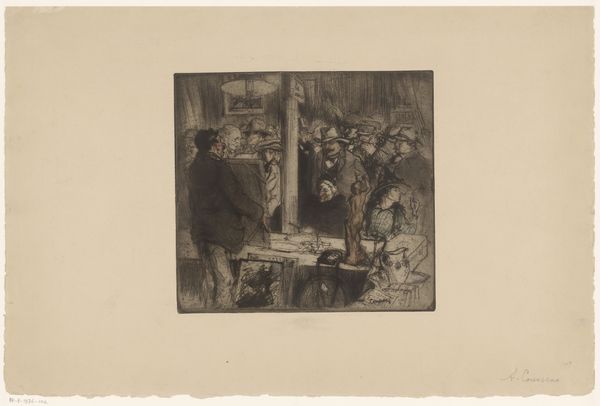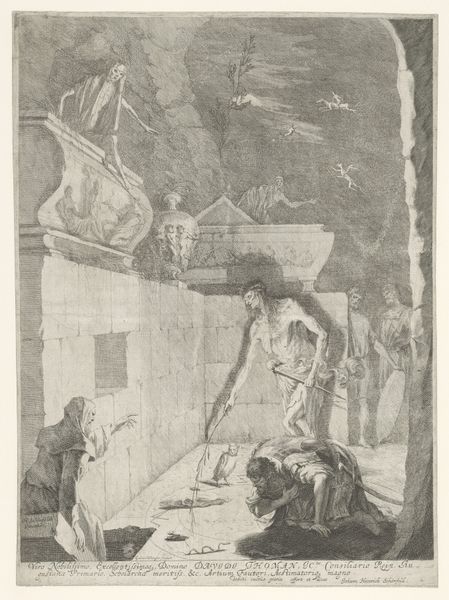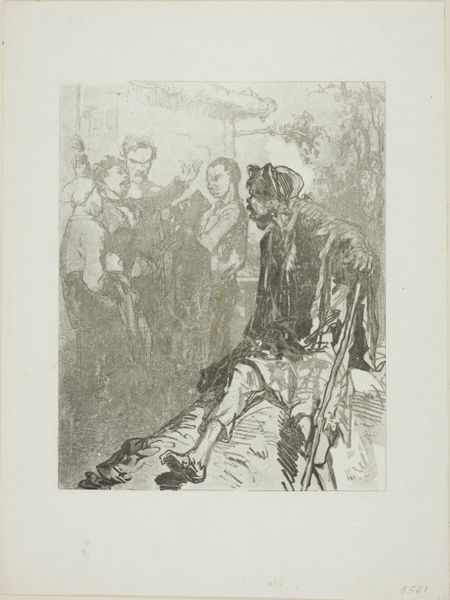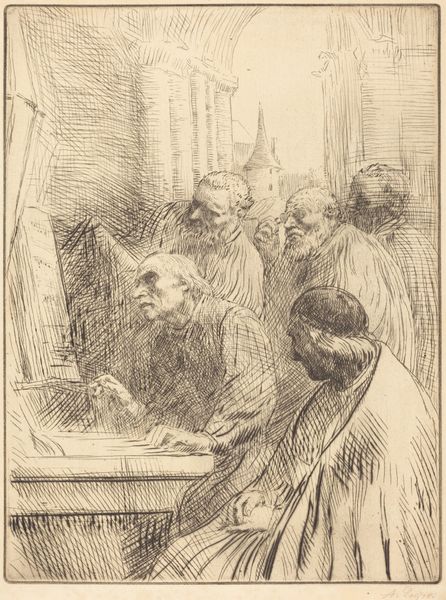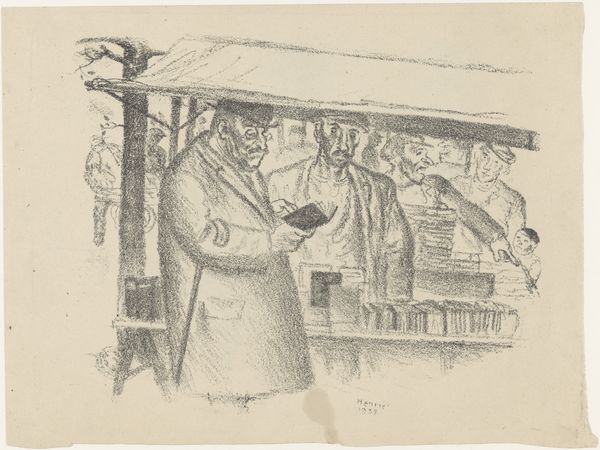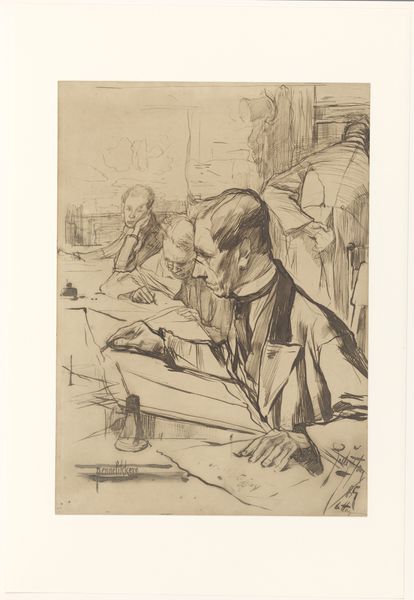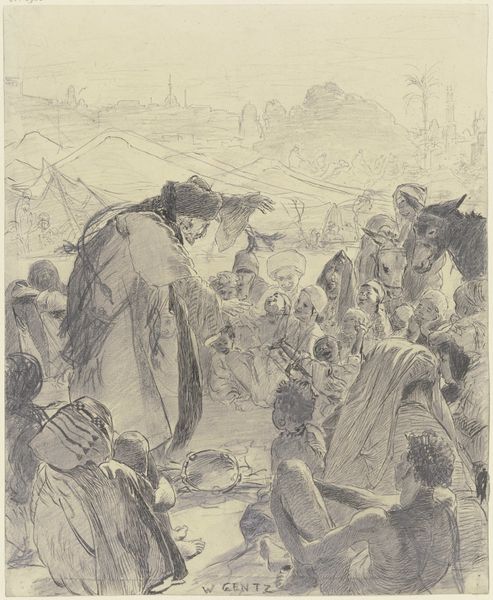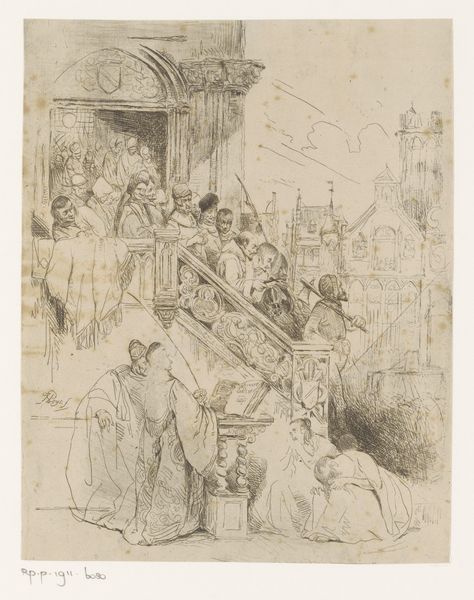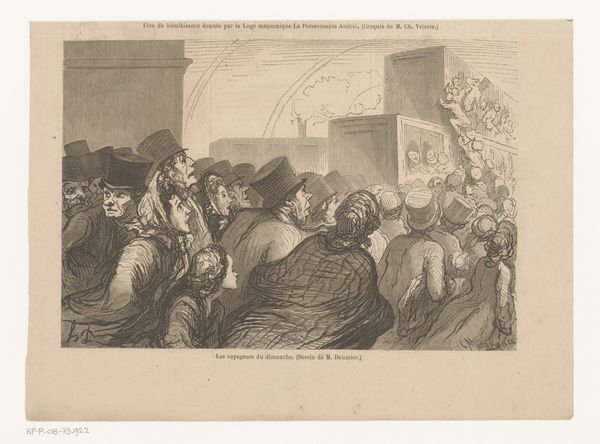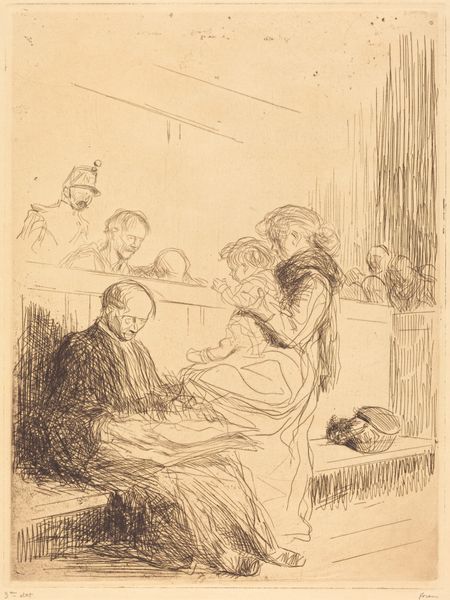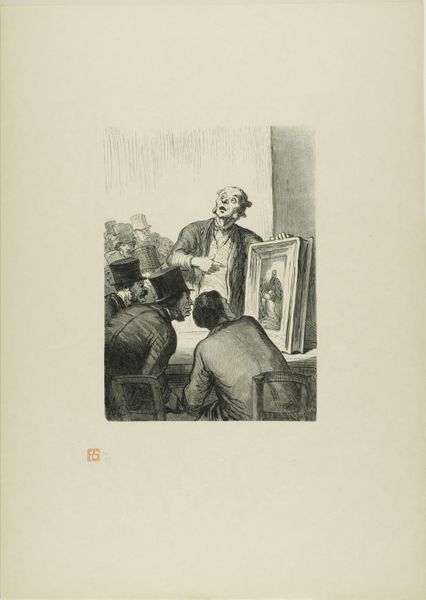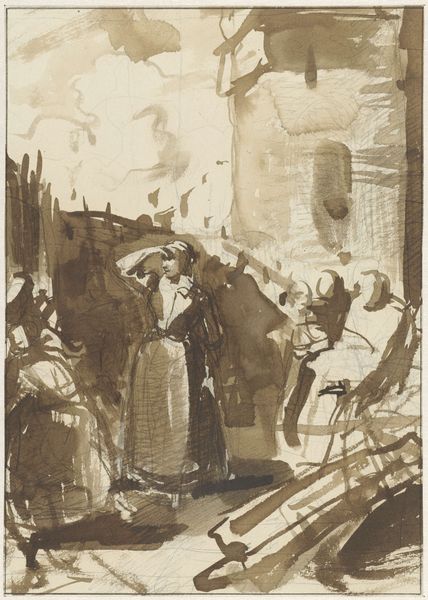
Dimensions: height 214 mm, width 147 mm
Copyright: Rijks Museum: Open Domain
Curator: What a striking image! This drawing is titled "Man met verrekijker", which translates to "Man with binoculars," created by Alexander Ver Huell, dating between 1848 and 1889. It’s currently held in the collection of the Rijksmuseum. It appears to be a work on toned paper using pen, pencil and wash techniques. Editor: Immediately, I see the chaos, almost like a twisted carnival unfolding within the man's vision. The style feels reminiscent of Daumier, if he’d been crossed with Hogarth—a sardonic commentary in monochrome. What are your initial thoughts? Curator: Absolutely. It speaks to the socio-political landscape of the 19th century—a satirical, critical observation. This piece screams of social critique, reminiscent of earlier protest movements in that period. It is likely about class division or corruption perhaps, viewed from a removed perspective, which may also express an unwillingness or inability of the individual to effect social change. The lens through which we perceive such events inevitably influences our comprehension. Editor: That's a very keen point, and I agree it is social criticism, though the symbols woven in could easily also read as pure moral decline— note how prominent the grotesque is depicted throughout, alongside established authority; the artist makes clear their association. The binocular icon alone speaks volumes, almost like he's consuming this degradation. I believe it is an unflattering metaphor which ultimately leads to a dark pessimism regarding humanity itself. Curator: A pessimissm borne of lived historical experience in an epoch teeming with both radical change and staunch repression of rights among marginalised members of Dutch society. A society struggling to emerge into modernity whilst carrying forward its complex colonial legacy. This man with the binoculars then, perhaps symbolizes an upper-class intellectual surveying a society undergoing massive changes without directly participating in those changes himself? Editor: An interesting argument indeed; whether intellectual passivity or societal condemnation, both perspectives highlight art’s function as social critique. Curator: By analysing Ver Huell’s "Man met verrekijker" and considering his likely lived-experiences we open dialogue concerning themes such as class division during tumultuous social times across cultural discourse; that exploration reveals valuable insights applicable in navigating current societal challenges while encouraging constructive engagement between artistic creation alongside political discussion. Editor: Indeed. Ver Huell leaves us not with answers, but profound questions about our place, and the symbols, which make up the world we see –or choose not to.
Comments
No comments
Be the first to comment and join the conversation on the ultimate creative platform.


